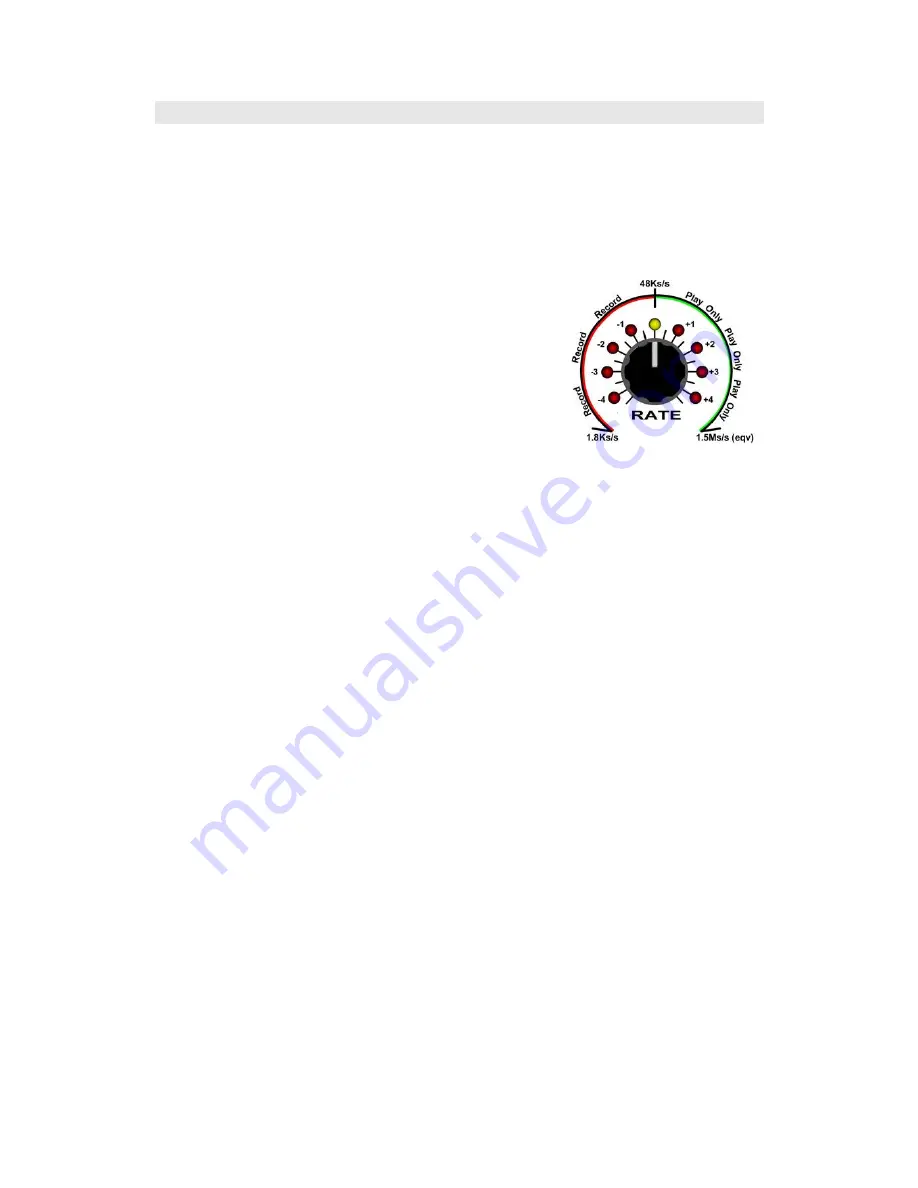
- 40 -
VIII. Operation
To fully enjoy your Reflex LiveLoop, here's some deeper explanations of how best to control and set things.
A.
Knobs
None of the Reflex LiveLoop knobs are purely analog so can change with the function or mode that is enabled at
the time. The PlayFX knobs have 6 different modes, but the Rate knob has 7! Fortunately, the Blend and feedback
knobs are always Blend and Feedback.
Rate Knob & Rate Attenuvertor
The Rate knob, by default, controls the Sample Rate on it's own.
During Sample play the range is -4.9 octaves to +4.9 octaves, which is a
massive range, almost 10 octaves.
Play will track this truly on the low (left) side, and by smoothly skipping
samples on the high (right) up to equiv. 1.5Ms/s.
When the Rate knob is centered, the Amber/Yellow LED and the two
either side of it will light, indicating the knob is centered.
The range at and below this point can be used to set the Sample Rate
for recording.
When adjusting the Rate knob, a new LED will illuminate as an octave
point is crossed. This is fairly accurate and is reliable as an offset value
for Rate CV in at 1V/oct over the range.
Rate Sensitivity
Because the Rate knob has such a wide range, it can be quite sensitive for pitch sensitive applications. That is why
there is a User Setting to reduce the range to +/- 1.2 Octaves if preferred. This is a permanent setting, which
means it will be remembered at next power up. This does not affect the Rate CV range at all (+/- 5 octaves) except
you won't be able to offset it with the Rate knob as much.
Rate Return
As the Rate control is used for Setting other modes and functions (such as Slice selection, Clock division, other
Rates) it has a "return to rate" override.
For example, let's say you were using the Rate knob to select a Slice, then exited Slice sel to set the global
sample rate of slices playing. Instead of the Rate abruptly jumping to where the knob is now (unlikely in the right
spot) there is a "pass or slide: condition. This is indicated by a pair of LED's in the LED circle flickering 4 times,
which shows the direction the knob needs to move in order to pick up control.
If you move the Rate knob away from this direction, the Reflex assumes you want to set to a new sample rate far
from the present rate and slides smoothly/quickly up to that position. This avoids any abrupt changes and sounds
rather intentional!
A desired sample Rate that is between the original rate and the present knob position can be obtained by moving
towards the "flicker" direction, but once the knob is over the proposed rate, just move slightly away from the
flicker.
Blend Knob
The Blend knob is probably the simplest knob on the Reflex. It acts as a cross-fader between the incoming audio,
and the sampler output audio. It can be used to mute a preparation also, if you have a headphone monitor/amp
plugged into the FX feedback Send jack. (Headphones direct will pull down the feedback, but can be used)
The EQ CV (when selected to all LED's off) can takeover control of the Blend knob.



























